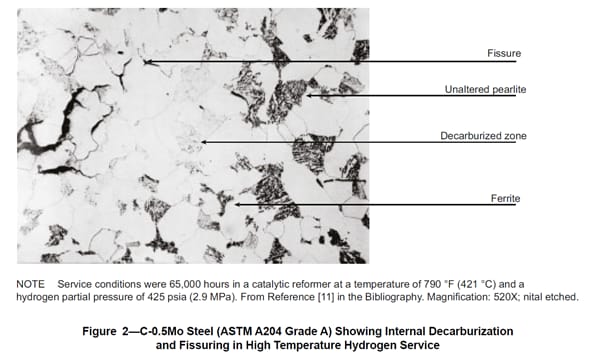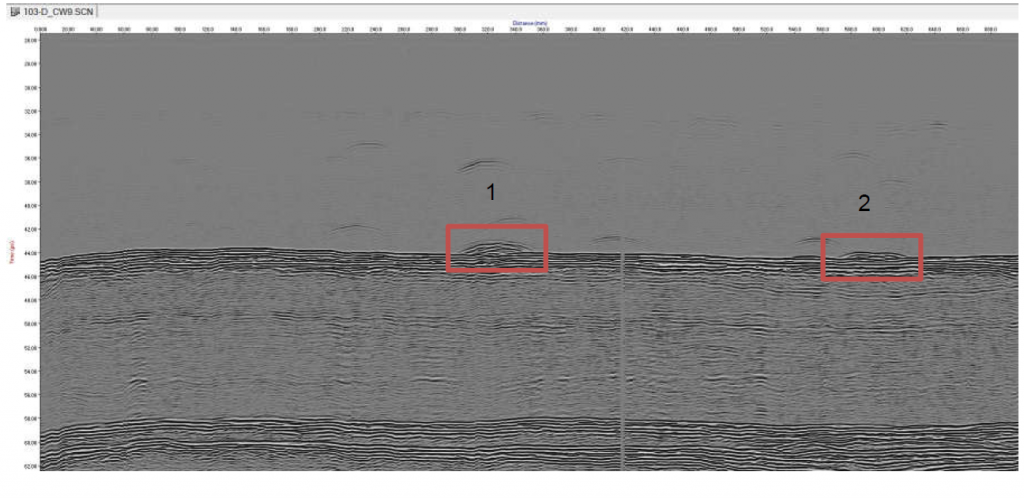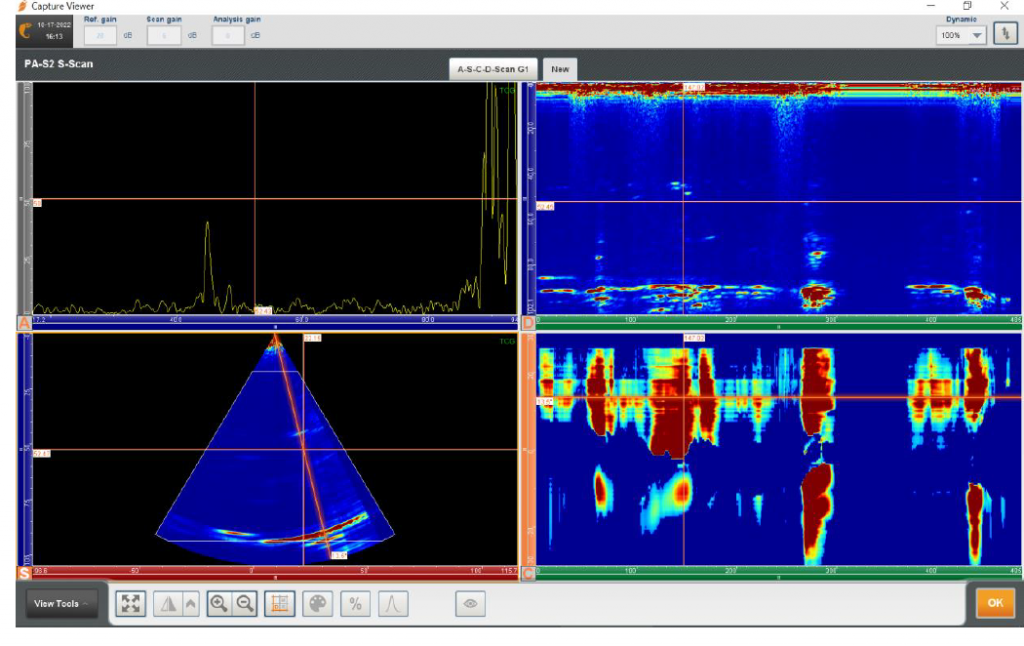High-temperature hydrogen attack (HTHA) is a damage mechanism that affects aging assets, including vessels, hydrocrackers, and heat exchangers in the petrochemical industry. It occurs when hydrogen molecules contained in a liquid or gas hydrocarbon penetrate steel components and combine with carbon atoms inside the steel lattice to form methane. The HTHA process has two important consequences that affect material properties. First, by reducing the carbon content of the steel, HTHA reduces the metal’s hardness; second, build-up of gas pockets at grain boundaries or at other interfaces inside the material can affect the structural integrity of the steel. When combined, these processes can substantially increase the risk of asset failure, with potentially catastrophic consequences.
The risk of HTHA affecting a steel component depends on factors such as age, composition, length of exposure to hydrogen, temperature, and partial pressure. From a structural point of view, methane build-up within the metal causes small (micro) cracks that are impossible to detect nondestructively, but over time these cracks may form clusters or connected cracking that may be “visible” with some nondestructive testing (NDT) methods
Phased Array is an ultrasonic testing technique that uses specialized multi-element “array” transducers and pulses those elements separately in a patterned sequence called “phasing”. This phasing sequence allows wave steering, focusing, and scanning. This is all performed electronically. The examination can be tailored for each application, increasing speed and reliability of the inspection.
Phased array ultrasonic testing (PAUT) is one of the primary methods used to characterize HTHA cracking in welds and heat affected zones. As a form of advanced ultrasonics (AUT), PAUT provides a rapid and nonintrusive inspection for even the most hard-to-reach assets, as the UT technology allows access to restricted areas.
TOFD uses longitudinal waves passed between ultrasonic sensors to detect, locate, and size flaws based on the time of flight of any diffracted beams. INTERGY utilizes TOFD to rapidly scan heat-affected zones and in-service components to analyze material composition and determine asset integrity.
Time-of-Flight-Diffraction (TOFD) is essential for analyzing through-wall depth cracking. It is sensitive to all types of weld flaws, providing a detailed image of damage in affected components.



Company
(+20) 1067260212
(+20) 01006126531
info@intergy.org
location
8B, Sakalya Street
Nasr City, Cairo , Egypt
©intergy, All rights reserved, Product by wpaper agency PureSoft